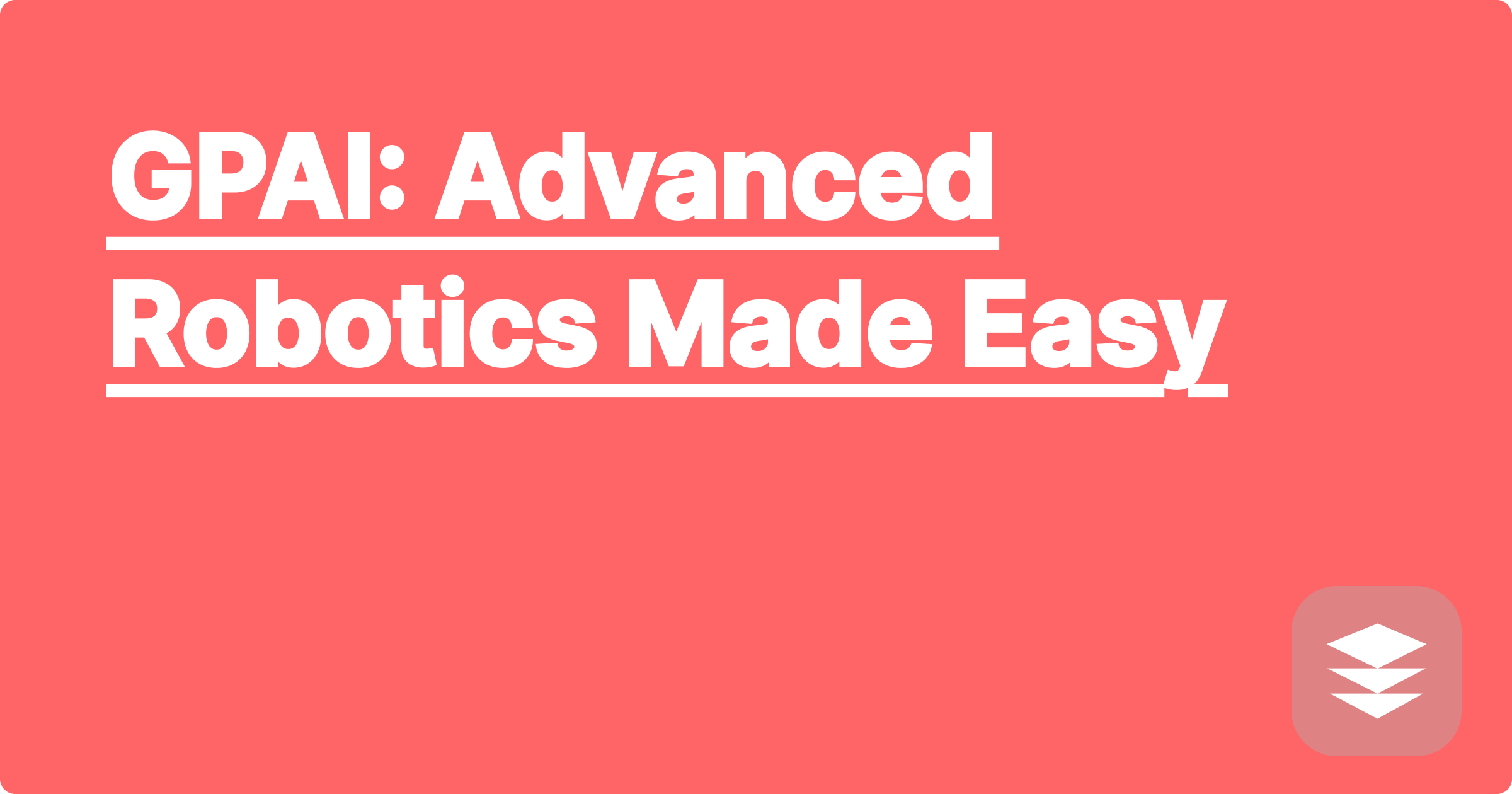
The world of robotics presents a formidable challenge for STEM students and researchers. Developing sophisticated robotic systems requires a deep understanding of complex mathematical models, intricate control algorithms, and advanced programming techniques. This complexity can be daunting, often leading to significant time investments and frustrating roadblocks. However, the emergence of powerful AI tools offers a transformative solution, providing a new pathway to streamline the design, simulation, and implementation of advanced robotic systems. These tools empower researchers to tackle complex problems with increased efficiency and unlock new possibilities in the field of robotics.
This shift towards AI-assisted robotics is particularly relevant for STEM students and researchers. Mastering these AI tools can significantly enhance their research capabilities, enabling them to explore more ambitious projects and accelerate their learning. By leveraging the power of AI, students can overcome traditional barriers and gain valuable experience in cutting-edge robotics development. This ultimately translates into a competitive advantage in both academia and industry, preparing them for the future of robotics engineering.
Developing a robust control system for a robot manipulator, for example, requires a deep understanding of kinematics, dynamics, and control theory. Deriving the equations of motion for a multi-degree-of-freedom robot can be a tedious and error-prone process. Furthermore, implementing these equations in a simulation environment and tuning the control parameters to achieve desired performance can be equally challenging. Traditional approaches often involve extensive manual calculations and iterative simulations, consuming significant time and resources. The complexity increases exponentially with the number of degrees of freedom and the sophistication of the control objectives. This complexity can hinder exploration of advanced control strategies and limit the development of truly innovative robotic systems.
AI tools like ChatGPT, Claude, and Wolfram Alpha offer a powerful alternative to traditional methods. These tools can assist in various stages of the robotics development pipeline, from deriving kinematic and dynamic equations to generating control algorithms and simulating robot behavior. For instance, one can use Wolfram Alpha to symbolically solve complex equations of motion, eliminating the need for tedious manual calculations. ChatGPT and Claude can be invaluable for generating code snippets in various programming languages, such as Python or MATLAB, for implementing control algorithms and visualizing simulation results. Furthermore, these AI tools can provide insightful explanations of complex concepts and suggest alternative approaches, fostering a deeper understanding of the underlying principles.
Let's consider the problem of designing a controller for a two-link planar robot arm. First, we can use Wolfram Alpha to derive the forward and inverse kinematics equations for the robot. By providing the link lengths and joint angles as input, Wolfram Alpha can symbolically calculate the position and orientation of the end-effector. Next, we can use ChatGPT or Claude to generate Python code for implementing these equations. We can then describe the desired trajectory for the robot arm and use these AI tools to generate a suitable control algorithm, such as a PID controller or a more advanced model-predictive controller. Finally, we can integrate the generated code into a simulation environment like PyBullet or Gazebo to visualize the robot's motion and evaluate the performance of the controller. Throughout this process, we can interact with the AI tools to refine the design, explore different control strategies, and troubleshoot any issues that arise.
Consider a scenario where we want to control the end-effector of a robotic arm to follow a circular trajectory. We can provide ChatGPT with a prompt like "Generate Python code to implement a PID controller for a two-link robot arm following a circular trajectory." ChatGPT can then generate the necessary code, including the PID controller implementation, the trajectory generation function, and the interface with the simulation environment. For example, the code might include equations like theta_desired = 2pit/T to define the desired joint angles for a circular path with period T. Furthermore, we can use Wolfram Alpha to calculate the inverse kinematics, given the desired end-effector position, using equations like theta1 = atan2(y,x) + acos((x^2 + y^2 + a1^2 - a2^2)/(2a1sqrt(x^2 + y^2))). These examples demonstrate how AI tools can be seamlessly integrated into the robotics development workflow.
To effectively utilize AI in STEM education and research, it is crucial to develop strong prompting skills. Clearly defining the problem and providing specific instructions to the AI tools is essential for obtaining relevant and accurate results. Experimenting with different prompts and refining the input based on the AI’s output is a key part of this process. Furthermore, it is important to critically evaluate the results generated by the AI tools and validate them against established theoretical principles and experimental data. Blindly accepting AI-generated solutions without proper verification can lead to erroneous conclusions. Instead, treat the AI as a collaborative partner, leveraging its strengths while maintaining a critical and discerning perspective.
In conclusion, AI tools offer a powerful new paradigm for robotics development, empowering STEM students and researchers to tackle complex problems with greater efficiency and creativity. By embracing these tools and developing the necessary skills to effectively utilize them, students can significantly enhance their research capabilities and contribute to the advancement of the field. Exploring the vast potential of AI in robotics is no longer a luxury but a necessity for staying at the forefront of this rapidly evolving field. Begin experimenting with these tools today, explore online tutorials, and engage with the vibrant online communities dedicated to AI-powered robotics. The future of robotics is being shaped by AI, and the time to embrace this transformative technology is now.
GPAI: Your Coding Homework Helper
GPAI: Streamline Your Research
GPAI: Differential Equations Solved